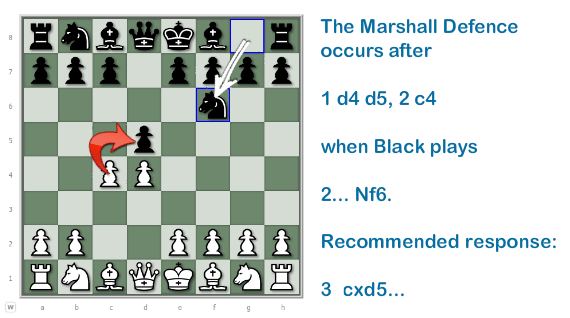
In this video I take you through some chess opening moves White can play when Black responds with the Marshall Defence.
The Marshall Defence occurs after 1. d4 d5 2. c4…
Black now moves his g8 Knight to f6. When that happens, what should White do?
On page 42 of A Strategic Chess Opening Repertoire for White John Watson recommends, 3. cxd5, the most common line against the Marshall Defence.
Actually, most of the theory behind this chess opening moves video training and blog post is taken from A Strategic Chess Repertoire for White – it’s an excellent guide to anybody who favours the Queen’s Pawn openings and is available on Amazon: https://amzn.to/2LPDCaf .
After 3. cxd5 Black has several options but I confine the video and this blog post to just ONE response, 3… Nxd5.
Why White Captures The d5 Pawn in response to the Marshall Defence
By capturing the d5 pawn on the third move White is forcing Black to surrender the centre with tempo. For this reason, the Marshall Defence is considered inferior according to John Watson (p. 42).
However, …Nf6 is a common second move among ordinary or casual chess players when faced with the Queen’s Gambit, so it’s worth thinking about how to respond.
When White captures the d5 pawn he goes a pawn up and there are only two ways Black can immediately recapture the pawn,
3… Qxd5
or
3…Nxd5
While there are other viable options for Black in sacrificing the pawn, I think it is most likely that amateur or casual chess players would seek to recapture the pawn. It is probable that most casual players are aware of the rule of thumb that one should not commit one’s Queen too early in the game, and so will take back the pawn with the Knight.
What to Do When Black Captures the d5 Pawn with his f6 Knight.
Here’s how things look after Black recaptures the pawn with 3… Nxd5:
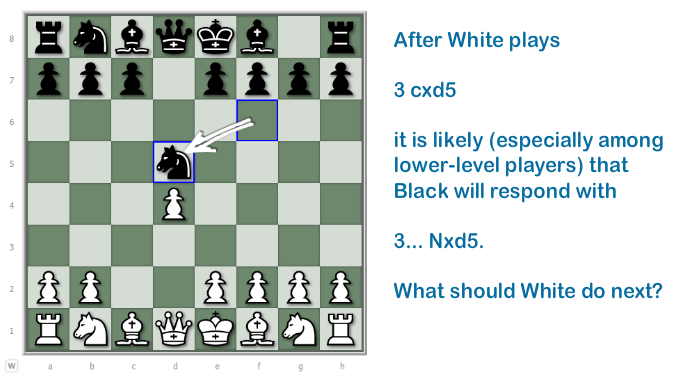
What should White do now?
White Should Avoid 4 e4 in the 3… Nxd5 Variation of the Marshall Defence
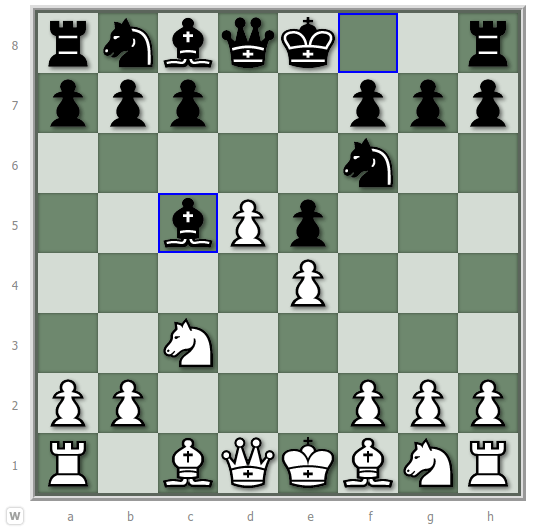
One move that seems natural is to attack the Knight with the e pawn. However, 4 e4 allows Black to create some counterplay.
Here’s how:
4 e4 Nf6
5 Nc3 e5! Black’s counterplay begins with a gambit.
6 d5 Bc5! Black’s Bishop is eyeing the weak f2 pawn. Black has also gained a developmental lead.
Queen Exchange, Double Knight Fork, Goodbye h1 and a8 Rooks!
However, if White accepts the gambit the game opens up with an exchange of Queens, White’s King forced to move off his home square and after that both sides can deliver Knight forks and capture Rooks!
6 dx5 Qxd1+
7 Kxd1 (7 Nxd1? Nxd5) …Ng4 threatening …Nxf2+ and then …Nxh1.
White can counter with 8 Nd5 and deliver a counter-fork, but the game has been blown open:
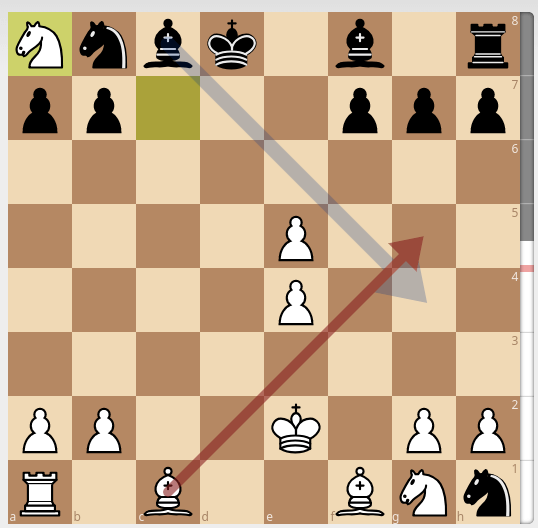
7 Kxd1 Nxg4
8 Nd5 Nxf2+
9 Ke2 Nxh1
10 Nxc7+ Kd8
11 Nxa8 (see diagram)
Although the Lichess machine gives White a small advantage here, the game is really wide open as both sides race to capture and/or rescue the Knights. Black can strike first with Bg4+ but the red arrow shows that White is threatening a symmetrical response, Bg5+.
White’s 4th Move Knight Finesse
So, instead of the deceptive 4 e4, the recommended move for White is 4 Nf3.
John Watson calls it a finesse and comments,
“this is the only finesse that White needs to know [against the Marshall Defence].“
John Watson, A Strategic Chess Opening Repertoire For White, p. 42.
4 Nf3 g6 Black is hoping to get to the Grünfeld Defence by placing his Bishop on g7. However, White can reply with
5 e4 Nb6
6 h3 to prevent Black from pinning the f3 Knight to the Queen with …Bg4.
6… Bg7
7 Nc3
Or…
4 Nf3 Bf5
5 Qb3! looking at the undefended b7 pawn.
From this point John Watson informs us that Black has three options, none of which ends to his advantage! Here they are:
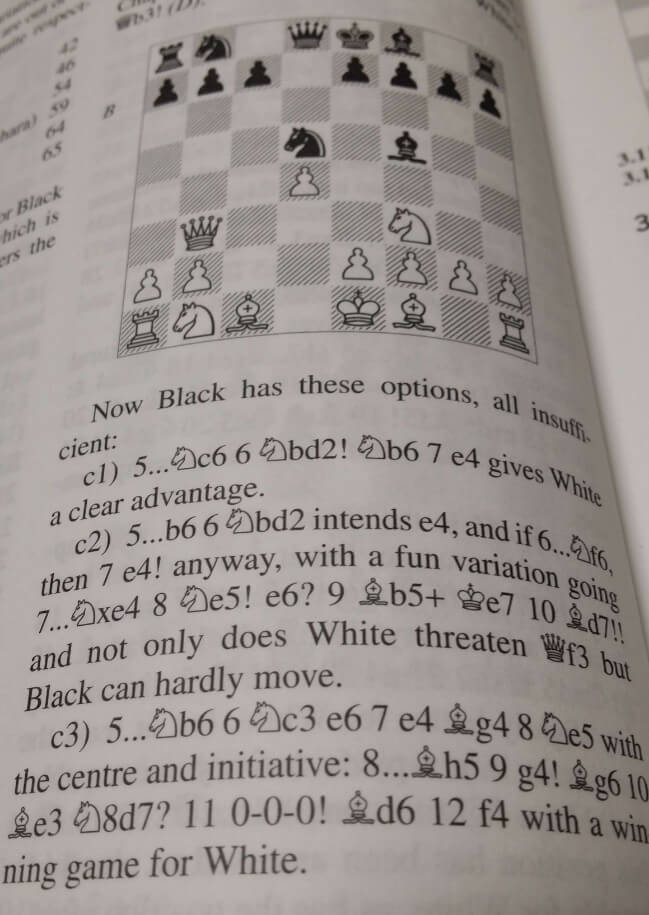
David Hurley
#PubChessBluffer